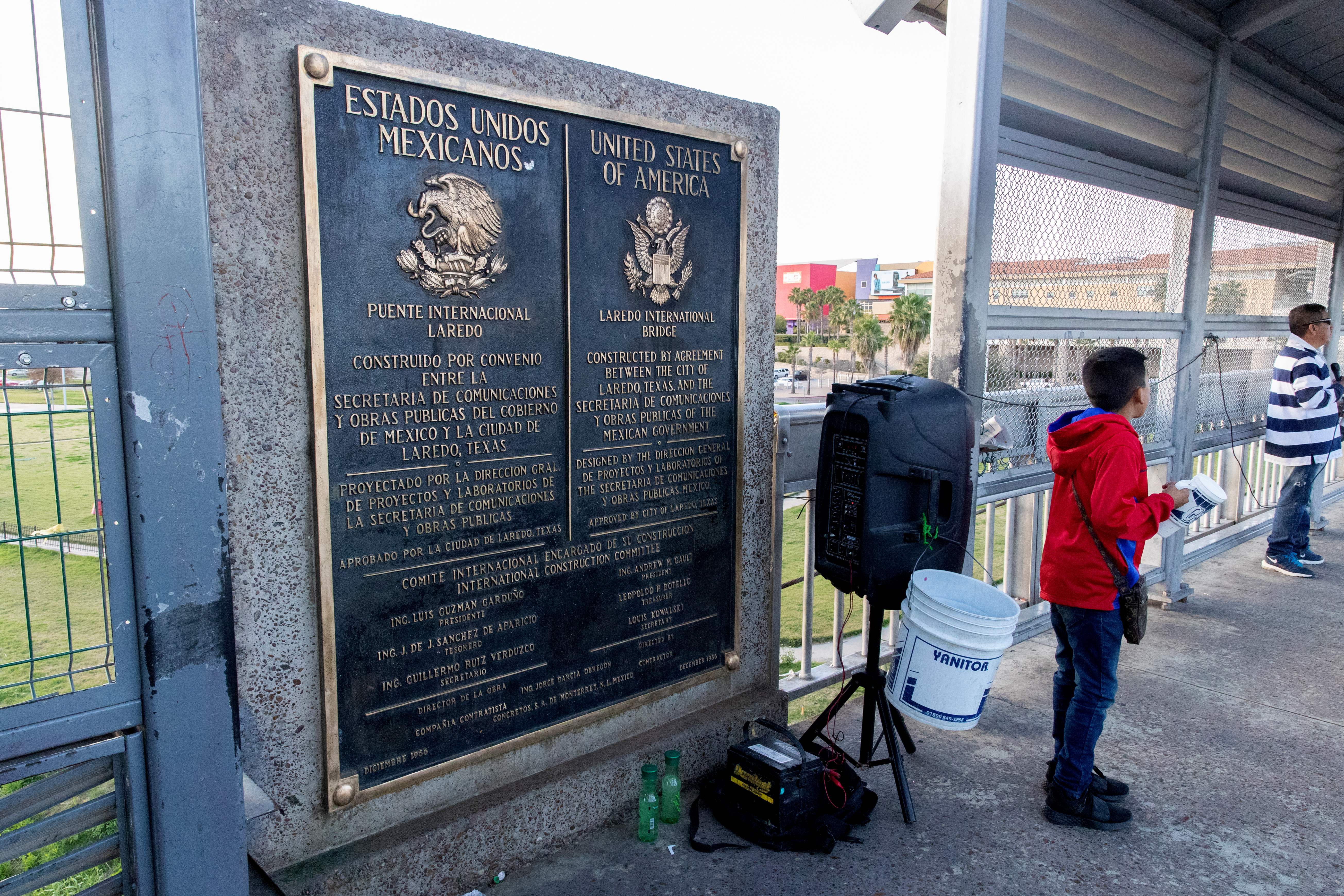Texas border town Laredo mobilises to give its Mexican neighbors Covid shots the state isn’t using
Cross-border effort using donated vaccines gives Nuevo Laredo residents thousands of Covid shots per day

Covid-19 vaccines meant for Texans as far away as Dallas are making it into the arms of residents of the Mexican town of Nuevo Laredo in a cross-border effort to improve vaccine access on the southern side of the Texas-Mexico border and ensure American vaccine doses are not wasted.
The Texas Tribune reported that the programme to increase vaccination rates in Nuevo Laredo was launched last summer near the peak of the Covid wave caused by the Delta variant, when demand for vaccines in Texas was dropping precipitously and vaccination rates across the border in towns like Nuevo Laredo remained precariously low due to a lack of vaccine supply.
Since then, doctors, hospitals and pharmacies have been able to donate their excess vaccine supply for transport to the Texan town of Laredo by car, truck or plane — whatever programme operators like Victor Treviño Jr, whose father serves as the Laredo Health Authority, can make work.
After the vaccine doses arrive in Laredo, buses pick people up in Nuevo Laredo, take them across the border where the vaccines are administered by nurses, then turn around and take them home.
Neither the State of Texas nor the Mexican government have any official role in running the programme, but Texas health officials have cheered the effort.
“It’s a bedrock public health principle that reducing an infectious disease on one side of a border will help reduce that disease on the other side, especially when there is a lot of cross-border traffic,” Chris Van Deusen, a spokesperson for the Texas Department of State Health Services, told the Texas Tribune.
That is certainly the case in Laredo and Nuevo Laredo, which, for all intents and purposes, function as one town separated only by a winding stretch of the Rio Grande. Cross-border traffic is the norm; many residents of both cities regularly travel back and forth to visit family members, shop, access medical care and more.
The interconnectedness of the two towns made the disparity in vaccination rates last summer feel not just wrong, but also potentially dangerous — not just for unvaccinated residents of Nuevo Laredo, but also for vaccinated residents of Laredo who were seeing their hospitals fill up with patients from their neighboring town.
Though Laredo’s Webb County is one of the most vaccinated in Texas, with vaccination rates in excess of 95 per cent, an estimate last summer pegged the vaccination rate in Nuevo Laredo at around seven per cent as Mexico struggled with its vaccine rollout.
People like Mr Treviño wanted to help, but faced a raft of logistical challenges. The US government had no authorised plan to officially donate doses, and even vaccinated Nuevo Laredo residents in Laredo would be a major challenge as the border was closed to all non-essential workers.
But the programme’s architects found a solution: if they could vaccinate Nuevo Laredo residents on the bridge connecting the two cities, those residents would not have to legally enter the US to receive a shot. US Customs and Border Protection (CPB) agreed to the plan as long as Nuevo Laredo residents did not disembark from the buses.
With the support of CPB and the Mexican Consulate in Laredo, the programme got up and running — distributing its first shots to factory workers and their families.
Interest in the programme increased sharply when the border was reopened to all travelers in November, and between the programme and the increased efficacy of the Mexican vaccination effort, Nuevo Laredo’s vaccination rate has increased to nearly 50 per cent.
Mr Treviño told the Texas Tribune that the programme will keep operating through April, at which point its architects will reassess whether it remains necessary. For now, it appears that people are eager to take advantage. The programme is currently administering nearly 2,000 shots per day — roughly 10 per cent of the vaccines administered in Texas daily.
Though vaccination rates are high in South Texas, the state overall is one of the less vaccinated in the country with only 61 per cent of residents fully vaccinated. In Laredo, however, they’re going the extra mile to keep their community safe.
Join our commenting forum
Join thought-provoking conversations, follow other Independent readers and see their replies
Comments
Bookmark popover
Removed from bookmarks